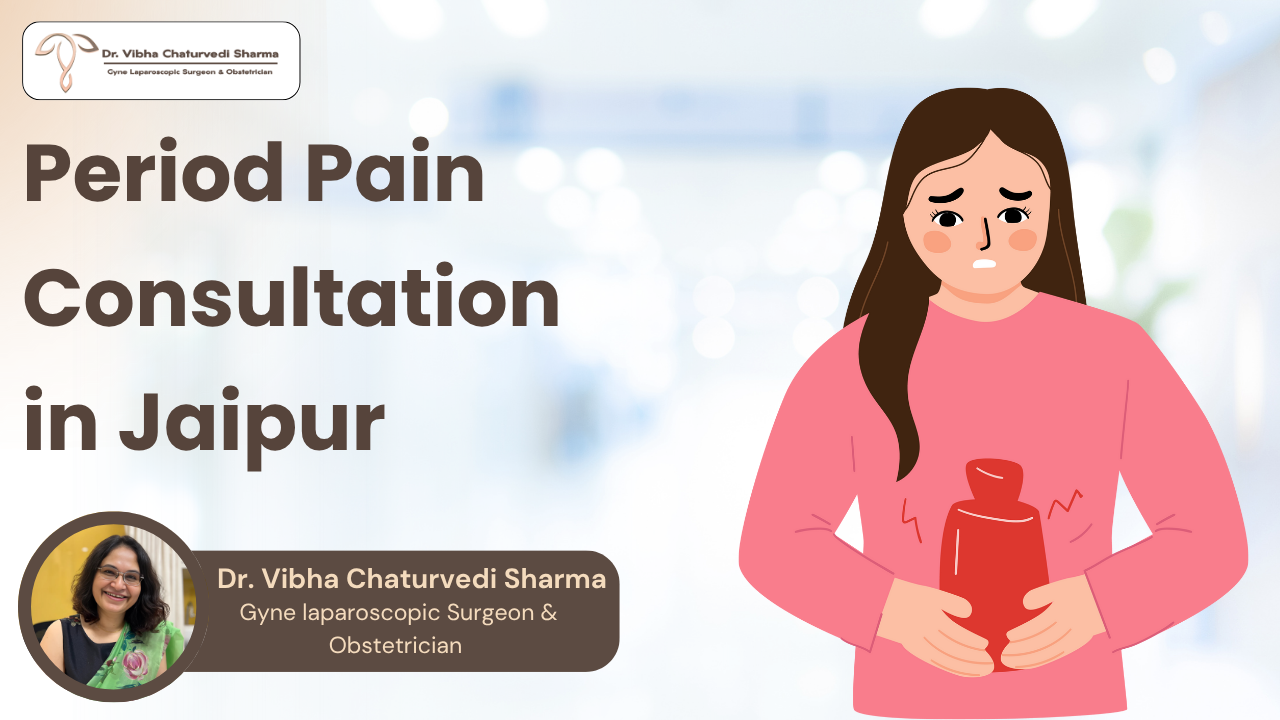Introduction to Hysteroscopy
Hysteroscopy is a minimally invasive procedure used to diagnose and treat various conditions affecting the uterus. It involves inserting a thin, lighted tube called a hysteroscope through the vagina into the uterus, allowing gynecologists to view the uterine cavity without the need for incisions.
Dr. Vibha Chaturvedi, with over 20 years of expertise, specializes in hysteroscopy to provide accurate diagnoses and effective treatments, ensuring patient comfort and quick recovery.
What is Hysteroscopy?
Hysteroscopy is a diagnostic and therapeutic procedure that offers a clear view of the uterus. It helps identify abnormalities and, in many cases, allows for immediate treatment.
There are two types :
- Diagnostic Hysteroscopy: Performed to identify the cause of symptoms like abnormal bleeding or infertility.
- Operative Hysteroscopy: Used to treat conditions like fibroids, polyps, or uterine adhesions during the same procedure.
Why is Hysteroscopy Performed?
- Abnormal Uterine Bleeding: Helps identify and treat causes of heavy, irregular, or prolonged bleeding.
- Uterine Fibroids or Polyps: Allows for the removal of noncancerous growths that may cause pain or bleeding.
- Infertility or Recurrent Miscarriages: Detects uterine abnormalities affecting conception or pregnancy.
- Endometrial Adhesions (Asherman’s Syndrome): Removes scar tissue from previous surgeries or infections.
- Retained Products of Conception: Clears the uterine cavity after miscarriage or childbirth.
- Congenital Uterine Abnormalities: Diagnoses and corrects structural issues like a uterine septum.
How to Prepare for a Hysteroscopy
Proper preparation ensures a smoother procedure and recovery. Dr. Vibha Chaturvedi provides comprehensive guidance tailored to each patient’s needs.
- Pre-Procedure Evaluation: Includes medical history review, physical examination, and necessary imaging or tests.
- Timing of the Procedure: Scheduled after menstruation for better visualization of the uterine cavity.
- Medication: Pain relievers or sedatives may be prescribed to ease discomfort.
- Fasting: Required for procedures involving anesthesia.
- Emotional Readiness: Patients are encouraged to discuss concerns or questions with their doctor.
The Hysteroscopy Procedure
Is typically performed as an outpatient procedure and may involve local, regional, or general anesthesia, depending on its complexity.
- Insertion of the Hysteroscope: The hysteroscope is gently inserted through the vagina and cervix into the uterus.
- Diagnosis or Treatment: Depending on the findings, the doctor may proceed with treatment, such as removing fibroids, polyps, or scar tissue.
The procedure generally lasts 15-45 minutes, depending on its purpose.
Benefits of Hysteroscopy
- Minimally Invasive: No incisions required, resulting in faster recovery and minimal scarring.
- Accurate Diagnosis: Provides a clear and detailed view of the uterus.
- Quick Recovery: Most patients resume normal activities within a day or two.
Potential Risks and Complications
While hysteroscopy is generally safe, it carries some risks, including:
- Cramping or mild pain post-procedure.
- Vaginal spotting or bleeding.
- Infection (rare).
- Uterine perforation (very rare).
Dr. Vibha Chaturvedi ensures thorough pre-procedure assessments and post-procedure monitoring to minimize these risks.
Recovery After Hysteroscopy
Recovery is usually quick, especially for diagnostic. Here’s what to expect:
- Post-Procedure Care: Patients may experience mild cramping or spotting for a few days. Pain relievers are typically sufficient to manage discomfort.
- Follow-Up Visit: A follow-up appointment ensures proper healing and discusses findings or further treatment if necessary.
Hysteroscopy vs. Other Diagnostic Tools
Hysteroscopy offers advantages over traditional diagnostic methods like ultrasound or D&C (dilation and curettage):
- Provides direct visualization of the uterine cavity.
- Enables simultaneous diagnosis and treatment.
- Reduces the need for more invasive procedures.
When Should You Consider Hysteroscopy?
If you experience any of the following symptoms, consult Dr. Vibha Chaturvedi to determine if hysteroscopy is right for you:
- Persistent abnormal bleeding.
- Unexplained infertility.
- Recurrent miscarriages.
- Chronic pelvic pain.
Innovations
Advances in hysteroscopic technology, including high-definition cameras and precision instruments, have improved outcomes and patient comfort. Innovations like office-based allow patients to undergo the procedure without anesthesia in a clinic setting, making it even more accessible and convenient.
Dr. Vibha Chaturvedi: Expert Care in Hysteroscopy
She uses state-of-the-art equipment and follows the highest standards to ensure the best outcomes for her patients.
Conclusion
Hysteroscopy is a game-changer in gynecological care, offering precise diagnosis and effective treatment for various uterine conditions. Whether you’re struggling with abnormal bleeding, infertility, or other concerns, can provide answers and relief. With expert guidance from Dr. Vibha Chaturvedi, you can trust that your health is in capable hands.
Contact Information:
Phone: 78499 09109
Location: SURYA HOSPITALS C -8, B-7, Sawai Ram Singh Rd, opposite SMS HOSPITAL, Jaipur





